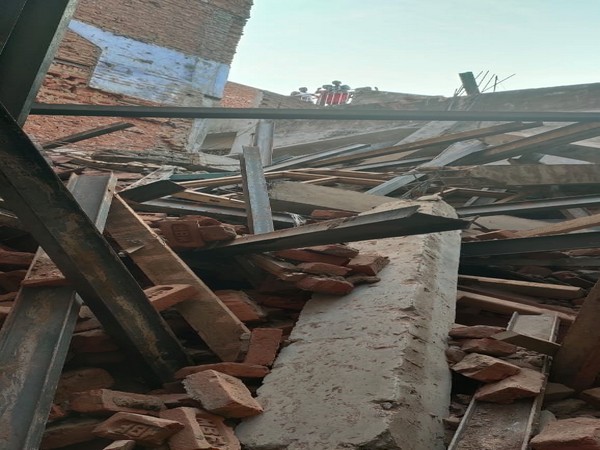Cubans risk collapsing homes as state struggles to tackle housing woes
Around 45,000 of the Cubans in need of a home are staying at communal state shelters, according to official figures, where they have little privacy and can end up stuck for years. The head of one state construction brigade in Havana, Dasmir Díaz, told Reuters his team was building four apartments for employees of sugar monopoly Azcuba.

- Country:
- Cuba
Wooden props support the ceiling of Cuban pensioner Filiberto Suarez' apartment in Havana as his building, like so many others in the Caribbean island nation, crumbles due to a punishing tropical climate and years of neglect. The roof of the century-old, three-story townhouse caved in years ago, forcing the families living on the top floor to move out, while shrubs sprout from cracks in its outer walls as if nature were reclaiming it.
When it rains, water seeps through the ceiling of the second story, two bedroom apartment where Suarez, 75, lives. But he still prefers it to the alternatives he says he was offered by local authorities: a communal shelter or an attic room. "Now I'm getting to be afraid because it's collapsing bit by bit," said Suarez, a retired decorator who sells medicinal herbs on his doorstep to supplement his monthly pension equivalent to just over $10.
Cuba's communist government, strapped for cash in the face of a decades-old U.S. trade embargo and inefficient centrally planned economy, has said repeatedly that tackling the country's housing woes must be one of its top priorities. In 2018, the government launched a 10-year plan called "Revolution is to Build" aiming to solve the deficit of around 929,695 houses in the country of 11 million by repairing 402,120 and building 527,575.
"We aspire to build more housing - let us make this dream possible," President Miguel Diaz-Canel told parliament last year, praising the construction of 43,700 extra homes in 2019, some 10,801 more than planned, despite a tight cash flow. But critics say it was too little, too late. Resources have become even tighter this year due to new U.S. sanctions and the coronavirus pandemic that has demolished tourism. Shortages of even basic goods like construction materials have worsened.
Some have sought to highlight the dangers posed by collapsing buildings with a campaign on social media, after the deaths of three girls crushed by a falling balcony in Havana in January cast a new spotlight on the issue. The government did not reply to a request for comment.
BEYOND REPAIR After the late Fidel Castro's 1959 leftist revolution, the state confiscated many of Cuba's grand historic buildings and distributed them to poor and middle-class families who over the years have often divided them into ever-smaller units.
Maintaining those buildings however, in the face of salty sea air, high humidity and hurricanes, fell by the wayside as the government prioritized universal healthcare and education, infrastructure in the impoverished countryside and industry. With state salaries averaging $40 per month, many Cubans say they cannot afford to repair or build homes on their own. Part of the government's plan is to facilitate credits and subsidies for this purpose although it has acknowledged it needs to end bureaucratic hurdles.
The decay is all the more poignant in Havana, which celebrated its 500th anniversary last year. The city's eclectic mix of colonial, neoclassical, baroque and Art Deco buildings are considered among the architectural jewels of Latin America. While communist rule long saved them from the urban developer's bulldozer and there has been a push to restore the historic city center in recent decades as tourism took off, many buildings have decayed beyond repair. Around 45,000 of the Cubans in need of a home are staying at communal state shelters, according to official figures, where they have little privacy and can end up stuck for years.
The head of one state construction brigade in Havana, Dasmir Díaz, told Reuters his team was building four apartments for employees of sugar monopoly Azcuba. The workers have been in shelters for more than 15 years. Many Cubans say they would rather risk their lives in their crumbling homes than move to a shelter. Sometimes, as in the case of Suarez, they also turn down offers of alternative housing if they feel it is too far out of town or inadequate.
(This story has not been edited by Devdiscourse staff and is auto-generated from a syndicated feed.)










